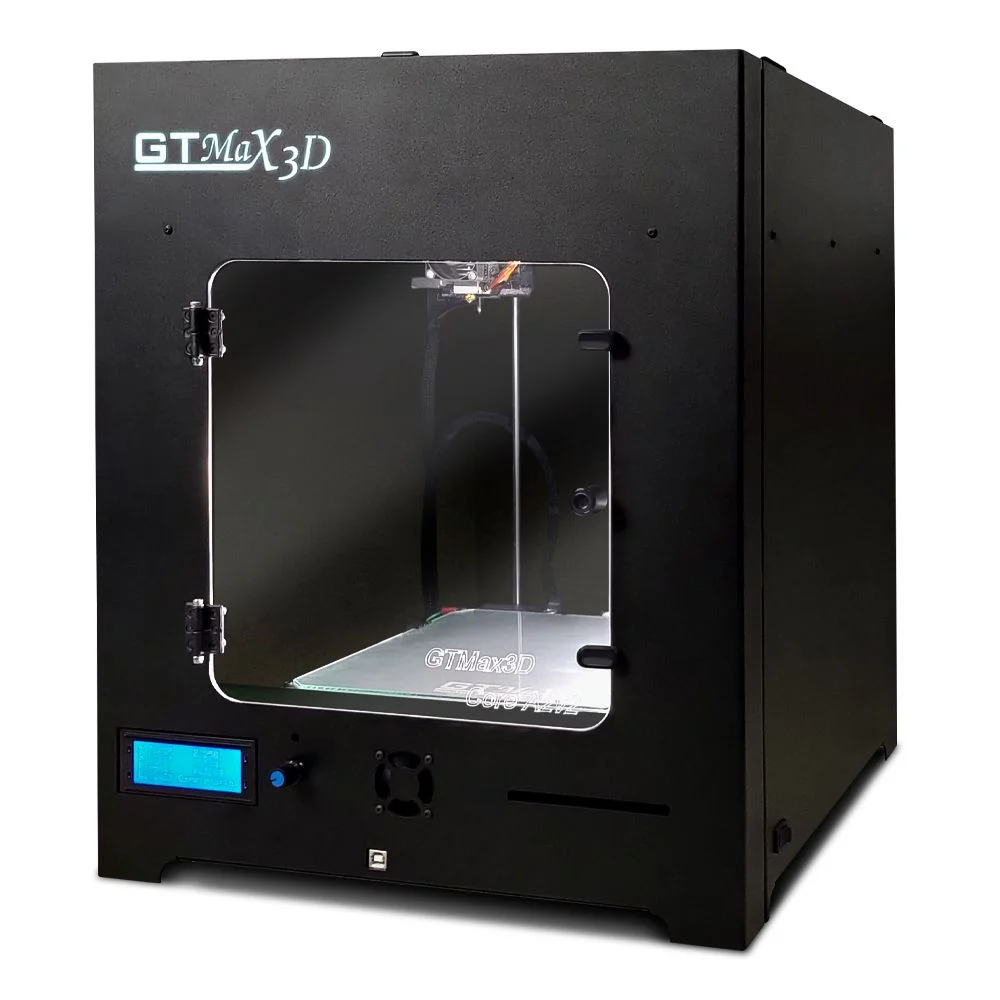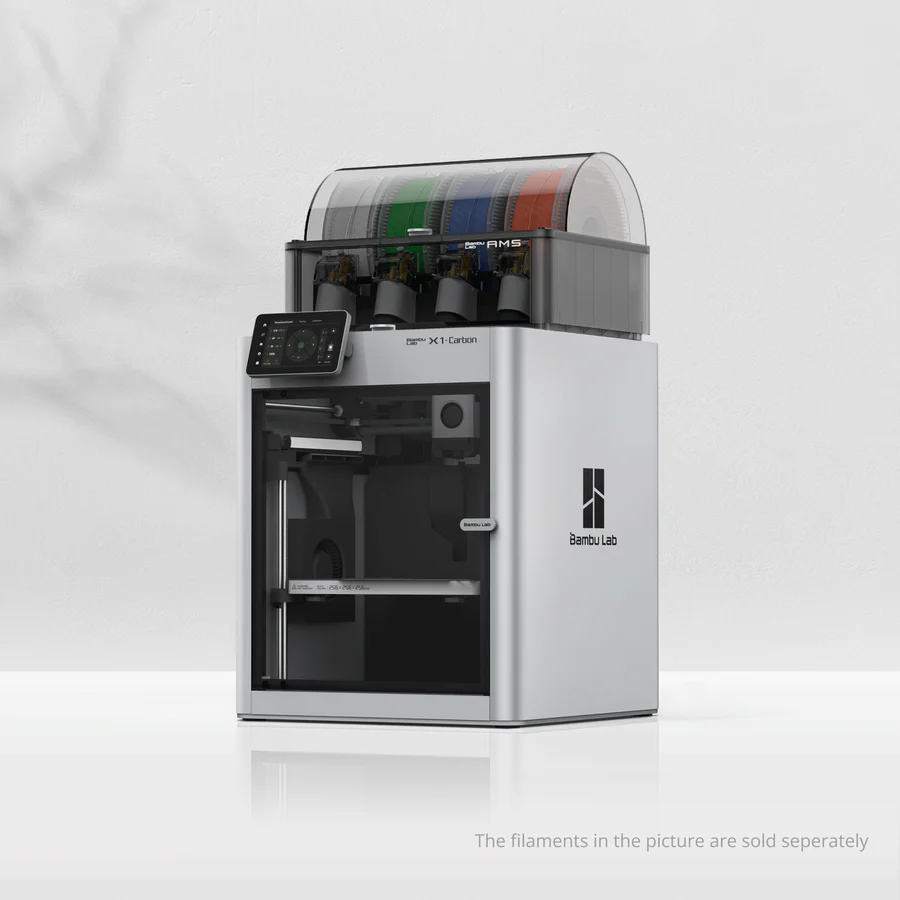Compare Core A2V2 vs X1 carbon
Comparison between the best 3D printers
Choose the best 3D printer at the best price. The cheapest 3D printers are here.
Buy a 3D printer here with 3D Fila.
 |
 |
|
| Model | Core A2V2 |
X1 carbon |
| Printing Material | Filament | Filament |
| Buy Filament for GTMax Core A2V2 | Buy Filament forBambu Lab X1 carbon | |
| Estimated price | $684,00 | $1449,00 |
| Manufacturer | GTMax | Bambu Lab |
| Release Year | 2019 | 2023 |
| Print Volume [mm] | 220x220x240 | 256x256x256 |
| Printer Size [mm] | 425x460x512 | 389x389x457 |
| Weight [kg] | 14,13 | |
| Power Loss Recovery | YES | YES |
| Enclosed printer | YES | YES |
| Bed Leveling | Automatic | |
| Filament End Sensor | YES | YES |
| Bed type | Heated | Heated |
| Power supply system | Bowden | Direct Drive |
| Standard nozzle | 0,4 | 0,4 |
| Maximum Nozzle Temperature [°C] | 295 | 300 |
| Maximum Bed Temperature [°C] | 135 | 120 |
| Maximum printing speed [mm/s] | 150 | 500 |
| Filament holder | YES | YES |
| Camera for supervision | NO | NO |
| Recommended filaments | PLA, PETG, Tritan, Flex, ABS | PLA, PETG, TPU, PVA, PA, PA-CF, Nylon, PC |
| Recommended slicers | Cura, Simplify, Slic3r, IdeaMaker | Bambu Studio, Super Slicer, Cura, Prusa Slicer, Orca |
| Maximum Resolution [mm] | 0,05 | 0,1 |
| Processor | Quad ARM A7 1.2 GHz | |
| Display | Mono | Touchscreen 5'' |
| Power Supply | 350 W | |
| Connectivity | SD / USB | Wifi, Bambu bus, Cartão SD |
| Operating systems | Windows, Mac, Linux | Windows, Linux, Macbook |
| Date of registration in the system | 2022-11-12 | 2024-04-10 |
| Release date | 2019 | 2023 |
| Extra features | The GTMax3D ProCore A2v2 is a compact and robust 3D printer with a printing area of ??220 x 220 x 240 mm. It offers high print quality, ranging from 0.05 mm to 0.32 mm. Its features include automatic filament detection and changing, travel speed of up to 300 mm/s, and a heated aluminum bed with a glass top. It has automatic bed leveling with 16 points and an all-metal hotend that reaches up to 298°C. The printer has a carbon steel frame with electrostatic painting, is automatic bivolt and has connectivity via USB and SD card. The Bowden system and core xy kinematics complete its advanced features. | The Bambu Lab X1 Carbon revolutionizes 3D printing with stunning design, high print speeds, and a streamlined user experience. It stands out with its CoreXY system, a hotend capable of reaching 300°C, allowing for a wide range of filaments. Its LiDAR-assisted bed leveling system, vibration compensation, and AMS multicolor printing capability raise the industry standard. Print quality is impressive, with the ability to fine-tune for perfection. The X1 Carbon, with its closed build volume, not only promises but also delivers one of the most advanced 3D printing experiences available to consumers. |
| Support for multiple colors and materials (AMS and CFS) | NO | YES |
Notes * |
||
| Cost-benefit | 6 / 10 | 7 / 10 |
| Hardware | 2.5 / 10 | 5.6 / 10 |
| Tela | . | . |
| Print volume | 3 / 10 | 4 / 10 |
| Performance | 1 / 10 | 4 / 10 |
Conclusion |
| In conclusion, the comparison between the GTMax Core A2V2 and the Bambu Lab X1 Carbon highlights several key differences that cater to varying needs and preferences among 3D printing enthusiasts. The GTMax Core A2V2 is a solid choice for budget-conscious users, offering reliable performance with a compact design and a respectable print volume. Its features, such as automatic bed leveling and good filament compatibility, make it suitable for hobbyists and beginners looking to start their 3D printing journey. However, it falls short in terms of maximum printing speed and advanced functionality when compared to more modern alternatives. On the other hand, the Bambu Lab X1 Carbon represents the cutting edge of 3D printing technology, with its faster printing speeds, superior build quality, and advanced features like LiDAR-assisted bed leveling and multi-material support. Although it comes at a higher price, the investment is justified for professionals and serious makers who demand precision and versatility in their printing tasks. Ultimately, the choice between the two printers will depend on individual needs—whether the priority lies in cost-effectiveness and fundamental features or in high-performance capabilities and innovative technology. |

